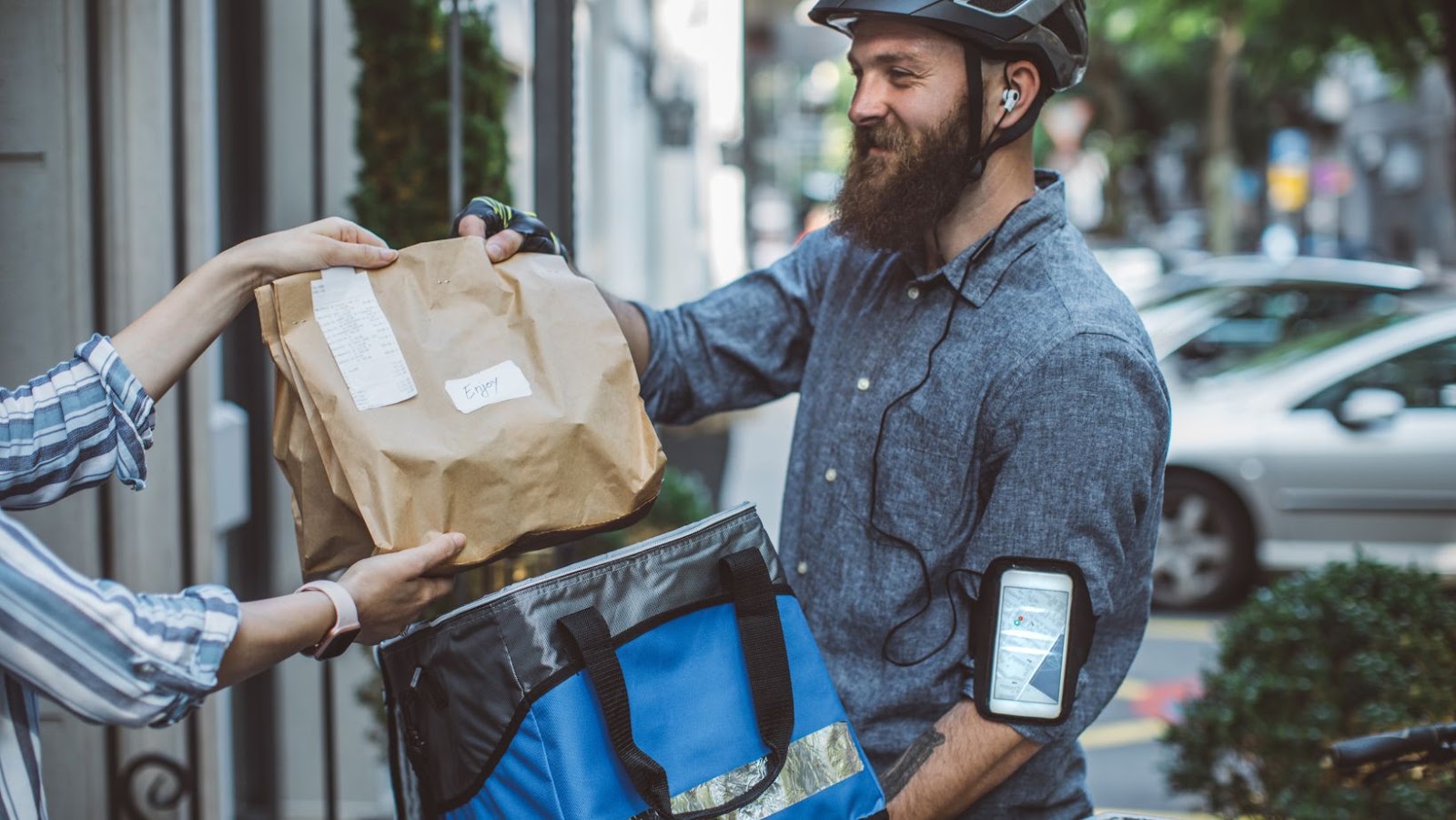The Korean retail giant, Coupang, has recently acquired Yogiyo, a food delivery service in South Korea. This deal has pushed up the competition in the food delivery industry and has major implications for the future.
In this article, we will take a closer look at this deal’s effects on the food delivery industry.
Korean Retail Giant’s Yogiyo Deal Heats Up Food Delivery Battle
The core purpose of the Yogiyo Deal was to increase food delivery sales and generate customer loyalty. Following its launch in February 2018, the Yogiyo Deal was issued by Woowa Brothers Corporation and granted exclusive delivery discounts at partner restaurants. This deal enabled customers to get discounts by logging into the Yogiyo app and selecting their desired restaurant. Furthermore, it provided customers with a wide range of delivery discounts at discounted prices for 31 restaurants, including Korean and foreign cuisine.
The Yogiyo Deal offered various discounts, from free delivery fees to discounted service charges from 10% to 50%. Customers could also use this deal to try new restaurants or dishes they haven’t tried before, given its highly beneficial features such as discounted service charges without any additional cost. As a result, this offer attracted many customers, and the food delivery market saw an instant surge in revenue through increased sales and greater customer loyalty generated through such deals.
Impact on the Food Delivery Industry
The recent acquisition of the Korean retail giant Yogiyo by Coupang will significantly impact the food delivery industry. The deal marks Coupang’s entry into the Korean food delivery market, intensifying the existing competition in this space. This has caused many speculating on the deal’s potential implications on the food delivery industry.
Let’s explore how it could affect the industry.
Increased Competition
The rise of food delivery options has created a fiercely competitive market that includes traditional restaurant takeout, large food delivery companies, and smaller emerging platforms. This competition has had significant implications for the industry and is changing consumer habits. Many restaurants have been forced to create delivery services to remain competitive or have turned towards third-party delivery platforms to gain more customers. However, this relationship also opens restaurants to fees for every order placed through the platform.
Furthermore, since customers are now shown ratings from each restaurant and ordering details such as estimated time of arrival and customer reviews, data has become increasingly important in influencing purchase decisions. Companies must continually monitor online generated reviews and update customer service strategies accordingly to remain competitive.
Although the impact of increased competition on the food delivery industry is mostly felt by individual companies providing services, certain changes affect everyone in the business – whether they be restaurants or consumers. Delivery companies must continue to innovate and optimize their services or risk losing market share to competitors who can provide better product offerings or pricing models than them. At the same time, consumers can now expect faster accessibility with more diverse dining options at their fingertips.

Increased Demand for Delivery Services
The rise in the global usage of mobile phones and internet connectivity has resulted in the tremendous growth of online food delivery services. Consumers have come to expect convenience when purchasing and dining, often demanding near-instantaneous deliveries right to their doorstep. To keep up with the changing market landscape, restaurants, delivery companies and other food ordering platforms have had to adapt by investing in more sophisticated technology and new strategies.
The delivery industry is currently experiencing tremendous growth fueled by increased demand from customers increasingly opting for convenience over traditional dine-in experiences. Many of these consumers may find waiting for their meal to be delivered too cumbersome, making the development of quick, reliable sources of direct-to-consumer home delivery hugely important for profit margins within the food and beverage industry. Additionally, partnerships formed between food delivery services and leading ecommerce providers continue further accelerating this trend with integrated bundles that can provide beneficial savings on grocery items and deliver them straight to customers’ doorsteps.
In response to this unprecedented increase in demand for take-out meals and other items, many restaurants have taken an innovative approach by partnering with existing online ordering systems designed specifically for this purpose. While some are choosing traditional forms such as UberEats or GrubHub others are utilizing software platforms like Ordrin or Olo that allow customers to directly order from their favorite local eateries while providing more control over customization options. Additionally, several businesses have employed creative tactics such as providing incentives such as free deliveries within a certain distance radius or expediting orders at reduced prices, making online ordering much more attractive than ever before.
Increased Investment in Delivery Services
The pandemic has significantly impacted the food delivery industry, leading to an increase in investment from big-named companies such as Uber Eats, DoorDash, and GrubHub. This increased competition is fueling the sector’s growth with companies investing heavily into their delivery services.
One of the most notable changes in this rapidly expanding industry is how businesses reach customers. Companies utilize more digital marketing strategies to reach new customers over popular platforms such as Facebook, Twitter, Snapchat and Instagram. Customer loyalty programs and subscription boxes also serve as effective incentives for customers to continue ordering from the same company.
This influx of money has led to many restaurants using delivery services as their primary option for sales. Restaurants have had to become more creative in increasing profitability while reducing costs associated with delivery operations. Strategies such as introducing virtual kitchens that solely service delivery orders have been used due to its more economically efficient nature than conventional restaurant operations.
The food delivery industry continues to expand and innovate while demonstrating resilience in times of great change and adversity. As demand keeps increasing, so will the need for reliable technology that orients around customer experience and convenience-based solutions designed around today’s economy.

Implications for the Korean Retail Giant
The recent acquisition of a Korean Retail Giant’s stake in Yogiyo is heating the food delivery battle. While the implications of this deal are yet to be seen in terms of the market, it has big implications for the Korean Retail Giant and its competitors.
In this article, we will delve into the implications of this acquisition for the Korean Retail Giant and the food delivery industry.
Expansion of Market Share
The Korean retail giant’s recent acquisition of a food delivery company means they are now positioned to expand their market share in the delivery sector. This could have significant implications for other companies in the industry, particularly those that currently enjoy a larger market share.
With the new investment, the retail giant can offer a comprehensive range of services beyond delivery. This could include meal preparation and distribution, helping to position it as a leader in the food delivery industry. Additionally, with its leverage in both traditional retail and food delivery markets, it is likely to drive increased competition and innovation across categories.
To stay ahead of its competitors, the retail giant should consider how it can capitalize on its new investment by leveraging its current assets and resources. For example, it could explore partnerships with retailers to increase its presence across different channels or explore opportunities for expanding into new territories and markets.
Ultimately, this new development has opened up intriguing possibilities for consumers and competitors in this space, bringing convenience and competitive pricing into one platform – setting an exciting trend for years to come.
Increased Brand Recognition
The significant growth of the Korean retail giant, Coupang, is quickly becoming a phenomenon in the food delivery industry. As a result, this burgeoning company has nurtured some of the most recognized brands within the South Korean market regarding online delivery services.
With their numerous recognizable brand partnerships and customer-centric initiatives, including their 24-hour same day delivery offerings, more consumers are becoming aware of Coupang’s presence as they opt for this convenience. Such increased visibility has assisted in elevating Coupang as an easily recognizable entity amongst the Korean population and they have become a trusted source for food-related transactions and purchases.
Coupled with their dynamic advertising campaigns and other promotional strategies that transcend various media channels and platforms, Coupang is becoming a memorable emblem – ubiquitously known among trendsetting customers. This can lead to higher sales volumes as it encourages customer loyalty and potential expansion when viewed from an international prism; thus creating additional opportunities for growth across markets.
Additionally, increased brand recognition will lead to minimal pricing variations due to minor competitors present within similar areas within this particular industry sector.

Increased Profits
The Korean retail giant, Emart, recently announced that it was launching its food delivery service. This move is expected to bring increased profits to the already successful company. The new service will take advantage of the growing demand for convenience-based ordering. Delivery agents pick up customer orders and deliver them directly to their doorsteps within an hour.
Furthermore, Emart plans strategic partnerships with other domestic and international brands, such as Uber Eats and Natureland Meals. These companies will enable them to expand their reach into previously untapped markets across South Korea. With impressive technological capabilities such as predictive analytics and smart inventory management algorithms, Emart will surely gain a significant edge in the food delivery industry while increasing profits.
Conclusion
The Korean retail giant, Homeplus, has recently acquired Yogiyo in a deal that has grabbed media attention and provided a major boost to the Korean food delivery industry.
As more and more consumers turn to food delivery platforms to meet their needs, companies like Homeplus are making strategic investments to better their business. This major acquisition shows the growing importance of food delivery services in the retail market and marks a huge milestone for the industry.
Summary of Findings
Our findings suggest that the food delivery industry is experiencing significant growth and transformation. We found that customers increasingly utilize meal kit delivery, grocery delivery and restaurant delivery services to satisfy their food needs. Additionally, the widespread popularity of delivery apps has enabled customers to conveniently order their favorite dishes for quick home deliveries. Most customers prefer a seamless delivery process with an immediate response and short turnaround time for their orders. Furthermore, many restaurants are offering discounts for online orders to remain competitive in the industry.
Throughout this report, we have discussed the implications of this shift on both customers and businesses in the food delivery sector. On one hand, fast-food chains can leverage technology to gain operational efficiency while catering to customer demand better. On the other hand, customers are now enjoying greater convenience with access to a wide range of meal choices delivered at their doorstep quickly. This could lead to increased customer satisfaction levels and healthy profits for businesses associated with this industry.
With more people embracing food delivery services, it is evident that they have become an integral part of our day-to-day lives today. This presents immense opportunities for restaurant owners and entrepreneurs who can utilize helpful tools and adapt new strategies effectively to reach the maximum number of consumers across different regions. With appropriate business plans backed by effective promotional campaigns and reliable logistics networks, food businesses can garner maximum profit from delivering delicious cuisines at doorsteps cost-effectively within minimal time frames!
Future Outlook
The food delivery industry continues to grow and evolve, presenting challenges and opportunities for businesses. Moving forward, it will be essential for companies to stay informed about trends in the industry. Companies must continually evaluate the current market, analyze customer demands, and adjust their strategy to remain competitive.
In 2020, the delivery industry experienced unprecedented growth as many began relying on food delivery services due to the global pandemic. This trend appears to continue into 2021 with no sign of slowing down soon. Thus, restaurants must adjust accordingly by adapting their menus and reinventing themselves to meet these new demands while maintaining high customer satisfaction. Furthermore, with increased demand will come an influx of competition; meaning companies must continue to innovate.
For the food delivery industry to remain viable over time and maximize its potential profits, businesses within it need to embrace innovation and stay up-to-date on market trends. Companies that anticipate changes ahead of time and adapt accordingly will be more likely to survive in this rapidly changing industry.
